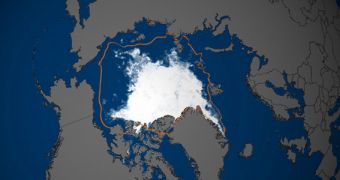Researchers at the Massachusetts Institute of Technology (MIT), in Cambridge, determined in a new study that the Arctic both releases, and captures and stores carbon dioxide. This paradoxical behavior makes it a bit more complicated for scientists to figure out how the North Pole ice sheets will react to Earth's changing climate.
Over the past few decades, ice extents at and around the North Pole have declined drastically, with interesting consequences. For starters, more CO2-gulping phytoplankton blooms started developing in northern waters, to a point where the Arctic now increases its carbon storage limit by 1 megaton yearly.
On the other hand, regions such as the Barents Sea, located near Greenland, appear to have turned into a carbon source as temperatures increased, which was an effect scientists were not expecting to see.
“People have suggested that the Arctic is having higher productivity, and therefore higher uptake of carbon. What’s nice about this study is, it says that’s not the whole story. We’ve begun to pull apart the actual bits and pieces that are going on,” says MIT principal research scientist Stephanie Dutkiewicz.

 14 DAY TRIAL //
14 DAY TRIAL //